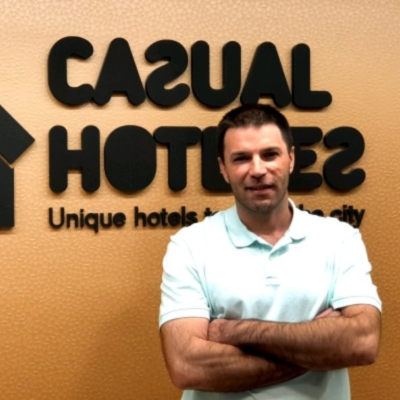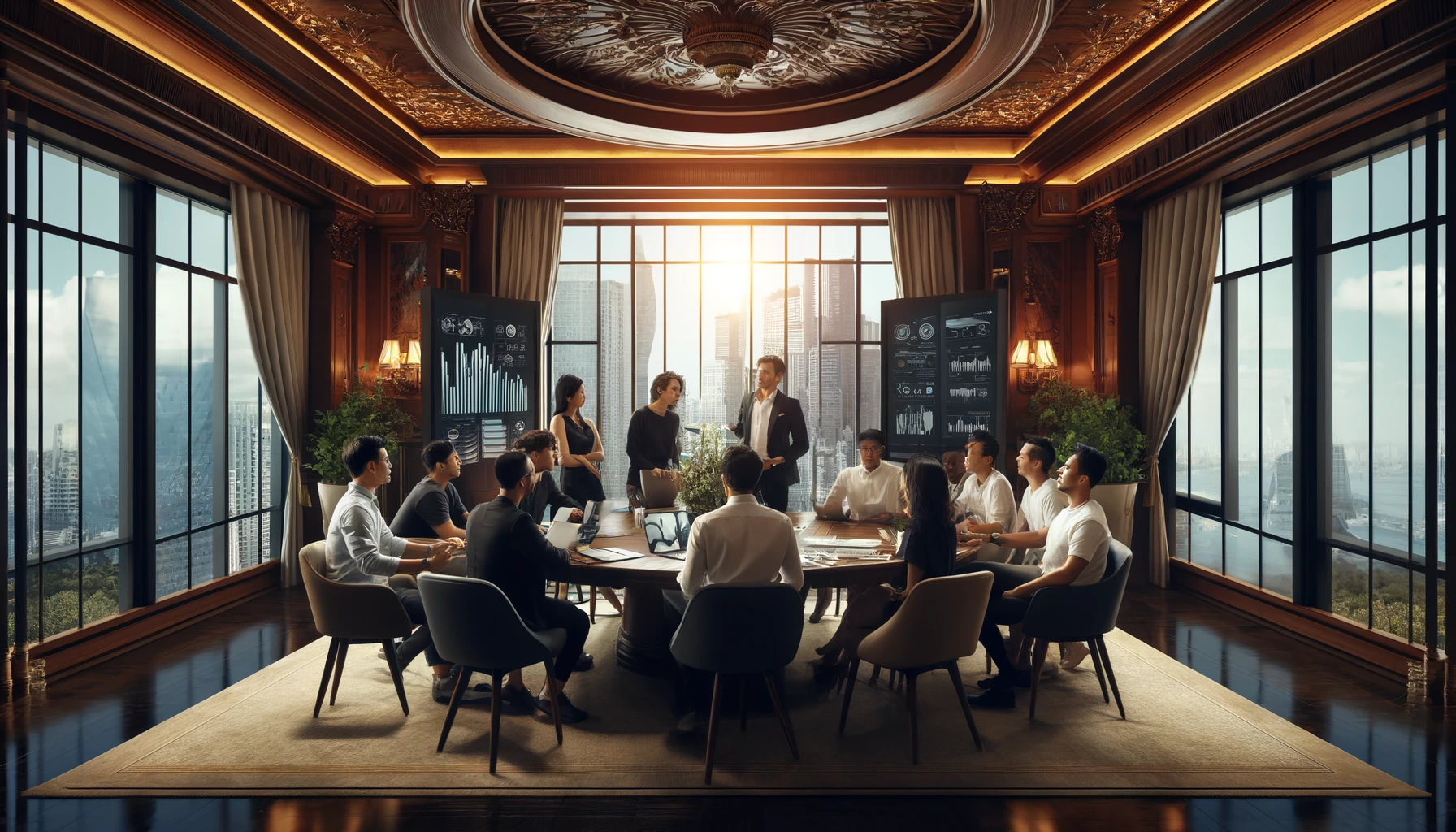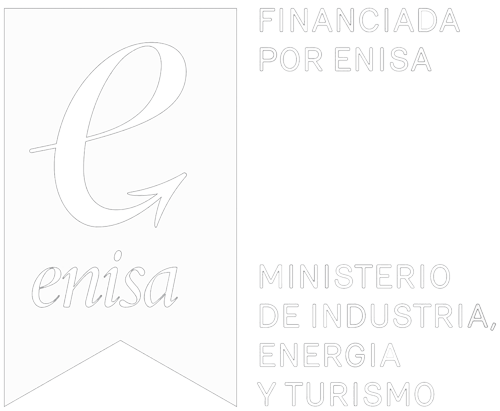We are living in an unprecedented era in the hospitality industry in Spain. During the last few years, a unique and powerful phenomenon has occurred in this industry market: we have been witnesses of a swing similar to that of a pendulum, not only recovering from the challenging situation of the COVID-19 pandemic, but surpassing unexpected limits.
Hotels in Spain, like their global counterparts, faced an uphill battle during the peak of the pandemic, grappling with closures, plummeting occupancy rates, and financial uncertainties. However, as the world gradually adapts to the new normal, the hospitality sector in Spain has displayed remarkable resilience and adaptability.
The industry has witnessed a shift towards digitalization, with hotels embracing innovative technologies to improve guest experiences and drive profitability. Despite the challenges, the pendulum of recovery and innovation is swinging, presenting opportunities for the hospitality industry in Spain to not only bounce back but to thrive in a post-pandemic landscape.
Surging ADR: Noteworthy Escalation in Average Daily Room Rates
Average daily rate per room values, known as ADR, experienced a greater global growth in the last 3 years than in the last two decades prior to COVID-19 pandemic, resulting in the highest hotel prices since records began (Figure 1). This growth, due to multiple factors, currently leaves us in a situation of uncertainty: Will the price continue to grow rapidly? Will there be a correction in which the price decreases? And most importantly, how do hotels ensure that their price dynamically adapts to different scenarios?
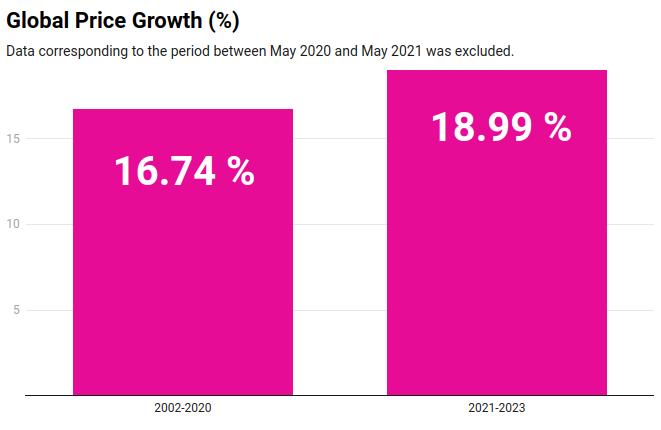
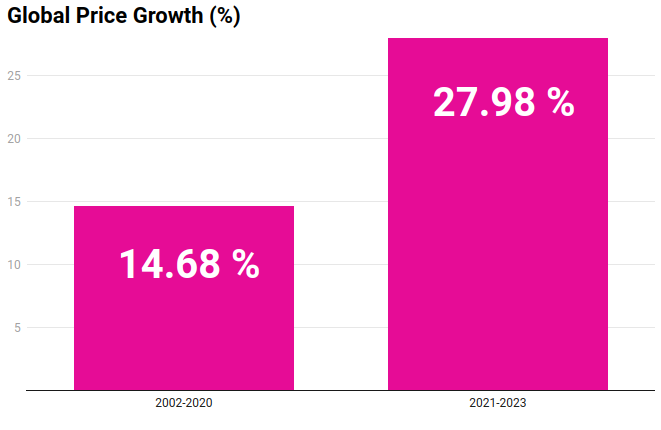
The exceptional situation provoked by COVID-19 pandemic had a worldwide relevant impact on social development and sustainability, which, in turn, was also observed for tourism. However, every social disruption has consequences on the hospitality industry, not only exceptional situations. As a representation of this mentioned impact, we could analyze hotel room prices evolution. As we can see in Figure 2, the evolution of hotel room prices since the early 2000s has gone through various stages due to national circumstances and the international context, both at a macro level and, specifically, in terms of tourism.

Complementarily, if we focus on the evolution of annual average growth of room prices in 2001 is approximately 4.2%. However, this picture is very variable over the following years. Spain has gone through years with decreases down to 5.9 % due to the financial crisis of 2008 and also increases of 5 and 6 % like in 2015 and 2016, respectively, which were the most significant variations in this country. From 2017 prices were growing by around 2% and evolving steadily until COVID-19 pandemic appeared.
In March 2020, everything changed: pandemic, quarantine, health emergency, travel restrictions, limits on opening hours and hotels collaborating with the health authorities from all perspectives: opening for workers, accommodating the sick. Therefore, revenue and profitability took a backseat to the bottom line during those horrible times.
These are some of the reasons why, particularly, the hospitality industry was one of the most affected by this global situation since adopting restrictions made their work impossible. Many hotels had to close for extended periods, and those that remained open experienced a significant drop in prices. In the 12 months following COVID, the average price fell by approximately 8 %, more than the decline experienced during the financial crisis. But starting from March 2021, the hospitality industry began to see light again: restrictions were increasingly diminishing, measures in hotels were making a difference, and people were eager to travel after being confined for a year. Nevertheless, those positive trends did not just allow hotels to recover to pre-existing levels, but unexpectedly continued increasing, leading them to unprecedented values.
Exploring the Drivers Behind this Growth Surge
The first reason is straightforward: the downturn due to COVID set prices for a circumstantial situation, and it seemed obvious that if normality was restored, prices should correct this decline in ADR. But instead, the global economic situation after COVID even favored this increase. The inflation in Spain during that period reached significant levels (Figure 3), increasing the costs for hotels making adjustments required.

Another fundamental aspect, as we previously discussed, is the social response to going back to “normality” after pandemic. Tourists want to make up for lost time and are willing to travel more after all that time under confinement. This fact combined with that of hotels willing to recover from income losses during the pandemic, resulted in hotels being able to maintain occupancy even with higher prices, during these last three years. This inflation point was also observed for other destinations, such as Portugal, where hotels have experienced remarkable ADR increases compared to pre-pandemic values (Figure 4).

In addition, as we can see in Figure 5, this phenomenon has extended to the aviation industry, which has grown by 15 % after COVID-19 pandemic.

Therefore, this data shows that this situation was extended to all industries around the world, not only in our country.
On the other hand, the national and international market situation also favored this industry since some hotels were forced to close for longer and some others reduced their services. Moreover, other continents’ behavior as a response to this “normality” situation, was to remain close for longer, such as the Asian market. Overall, these factors contributed to the growth of the hospitality industry in Spain.
Navigating the Path Forward: Can the Growth Momentum Endure?
The future, by nature, is uncertain and therefore full of unknowns. In the past, the hospitality industry has gone through some periods of high growth followed by periods of moderate growth, which ended up stabilizing prices. However, during the last three years, the global tendency has been noticeably positive. That trend, in the recent past months, seems to be moderating that increase, approaching similar values to those seen before even though they are still far from standard annual growth trends. Regarding the pricing model, we could consider three possible scenarios:
- High Growth (5 to 10 %): Although it seems impossible to maintain the growth rates, considering the evolution, it is not unreasonable to keep the trend rates of recent months and to propagate them over time. Spain is a destination that continues evolving, and there are factors that lead to optimism, such as sustained economic recovery, increased consumer confidence, and the resurgence of global tourism.
- Moderate Growth (0 to 5 %): A middle ground could emerge. The industry could focus on customer experiences enhancement and embrace strategic advancements. This situation would imply a balanced trajectory, avoiding extremes and searching for long-term stability.
- Slight Correction (-5 to 0 %): Alternatively, the industry may witness a period of unforeseen challenges provoking a slight correction. Some factors such as economic shifts, evolving travel trends, or external disruptions could negatively impact the pace of growth. However, resilience mechanisms could be adopted by the hospitality industry to avoid taking further risks or external impacts.

Adaptive Pricing Strategies: How Hotels Can Tailor Rates to Diverse Scenarios?
Due to all aspects mentioned above, we have been able to observe that the hospitality industry is always framed in an evolving landscape. This makes pricing rooms for a year in advance a challenging process, especially in a period full of uncertainty as these times.
As we have mentioned throughout this article, macro factors play a key role in shaping the hospitality industry’s future. While macro factors are external to the industry they affect these businesses’ operations. Some of these macro factors are presented below:
- Economic factors, such as unpredictable economic cycles, currency fluctuations and workforce availability may affect how and where people spend their money.
- Technological factors, such as improved company websites, social media accounts or online reservations facilities may enhance the attractiveness of the business for customers.
- Demographic factors, such as population, age and lifestyles may define the trends they follow as either customers or employees for the hospitality industry.
- Political factors, such as laws management may either favor or block the hospitality industry.
- Social-Cultural factors, such as fashion tendencies, preferences and cultural diversity strongly influence the hospitality industry, either negatively or positively, depending on the situation.
Anticipating changes in areas related to the economic landscape, geopolitical shifts, and emerging market trends from a year ahead will give us a clear understanding of these big-picture influences, setting the stage for improved decision-making. Apart from macro factors, one of the key considerations is the analysis of critical aspects, such as Pick Ups and Incoming Reservations. In such a dynamic environment, hotels benefit from a time horizon to price rooms strategically as well as from price adjustments as time progresses. An additional advantage is to employ multichannel alternatives to optimize room occupancy.
The best way of anticipating the hospitality industry behavior is to use forecast models and Revenue optimization to gain more insights. Traditionally, future prediction trends have relied on a method based on last year’s data (LY), which may no longer be sufficient. Long-term considerations, the influence of various factors, and the aggressive nature of emerging trends necessitate a paradigm shift in our approach.
This is where AI comes into play in the hospitality industry. AI tools offer not just insights but a proactive approach to decision-making. By employing forecast models and Revenue optimization strategies, hotels can anticipate and react more agilely to the complexities of the future. These AI tools are implemented to contribute to dynamic pricing optimization, occupancy forecasting and optimization, as well as revenue forecasting; always taken under considerations as many factors as possible. Those proactive reactions combined with data analysis and pattern identification allow hotels to stay ahead of competitors, adapting to the changing market dynamics.
Overall, as the hospitality industry steers its course into the future, the role of AI becomes crucial. It is not only a tool, but a strategic accomplice that strengthens hotels to face uncertainty, make data-driven decisions and improve their performance in an ever-changing landscape.


